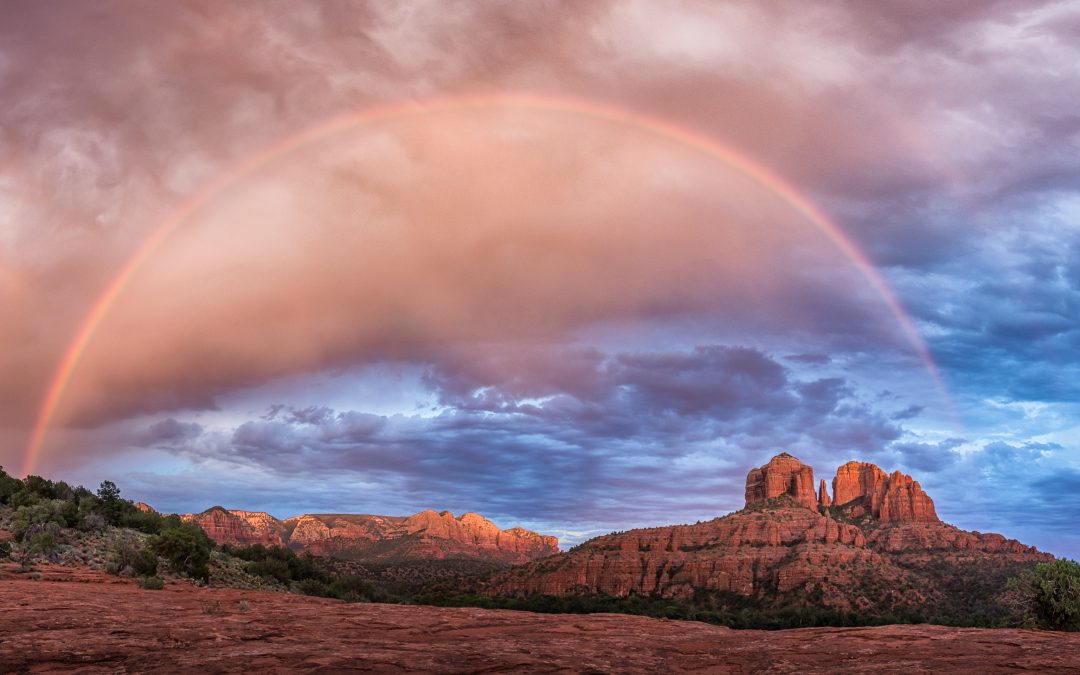
Jan 8, 2024 | Sedona Yoga
Use Your Practice to Inspire Community Action With a Holon
By Jill Robinson
In this season of our yoga practice we can lay the groundwork to “align to our greatest truth” in what will no doubt be a critical year ahead. This is our opportunity to engage the wisdom we harvest from our personal practice into purposeful action so that we may support and contribute to the evolution of our human family.
Our Yoga practice is one of many ways we can embody a way of living that values conscious evolution through purpose, love, collaboration and the highest good for All. By honoring these attributes of wholeness, we can embody and activate a critical mass of change — sourced from love rather than fear — and strengthened in unity, rather than uniformity. This is the vision of the Holomovement, amplifying the impact of personal evolution within a collaborative social movement creating a world where humanity and the planet can thrive.
Transforming the World Together
Group collaboration aligned in a specific cause or passion is at the heart of the Holomovement’s Theory of Change. Inspired by our cosmic building blocks to accelerate transformation, it is a movement activating a community of self-organized groups called ‘Holons’.
Holons are groups of three or more people aligned in a service-inspired project while engaging within the larger community network to share wisdom, support and resources. We can visualize it as a wave of exponential collaboration. Everyone’s participation is vital in amplifying our transformative potential.
The Holon Community Values that set the tone for this space include:
- Joyful Service (For the Good of the Whole)
- Compassionate Purpose
- Unitive Consciousness
- Radical Collaboration
- Transformative Action
Holons take action from a higher consciousness sourced from Spirit to consciously embrace and activate our unique roles in the Whole. This is why projects of all scopes and timelines are valued in the Holon community, as well as projects already in motion that are aligned with the Holomovement’s core principles.
Examples of Holons in action include a wide-range of projects such as global online prayer and meditation groups, community park and beach clean-ups, youth mentoring and regenerative farming initiatives. Your Holon might already be in action and ready to participate within the Holomovement in the form of Accessible Yoga classes or other non-profit organizational work.
Keeping the Festival Vibes Alive with Holons
Within our own Yoga community we have an extraordinary amount of wisdom and experience that can be amplified by collective intention. The Sedona Yoga Festival happening this March offers an exciting opportunity to activate Holon groups while embarking on a journey of self-discovery and community connection.
The Festival vibes we’ll be creating in Sedona shouldn’t be limited to our few days together. Fortunately, we’ll have plenty of opportunities to learn more about creating Holons and extending the wisdom of our Yoga community in a far-reaching ripple effect of change.
It’s uplifting to consider what can emerge from this gathering of incredible people when we put our practice into action within a supportive group. We all have a frequency that is activated when we take some sort of action, and these actions and energetic waves will in turn attract and synchronize with others to amplify a global shift in consciousness.
We’re thrilled to have stewards of the Holomovement participating and leading conscious conversations about Holons throughout the Sedona Yoga Festival. Join us in March for a chance to activate your personal practice and connect with an extraordinary community ready to take their personal practice into action. Tickets on sale now!
Lead photo by Charles Ruscher
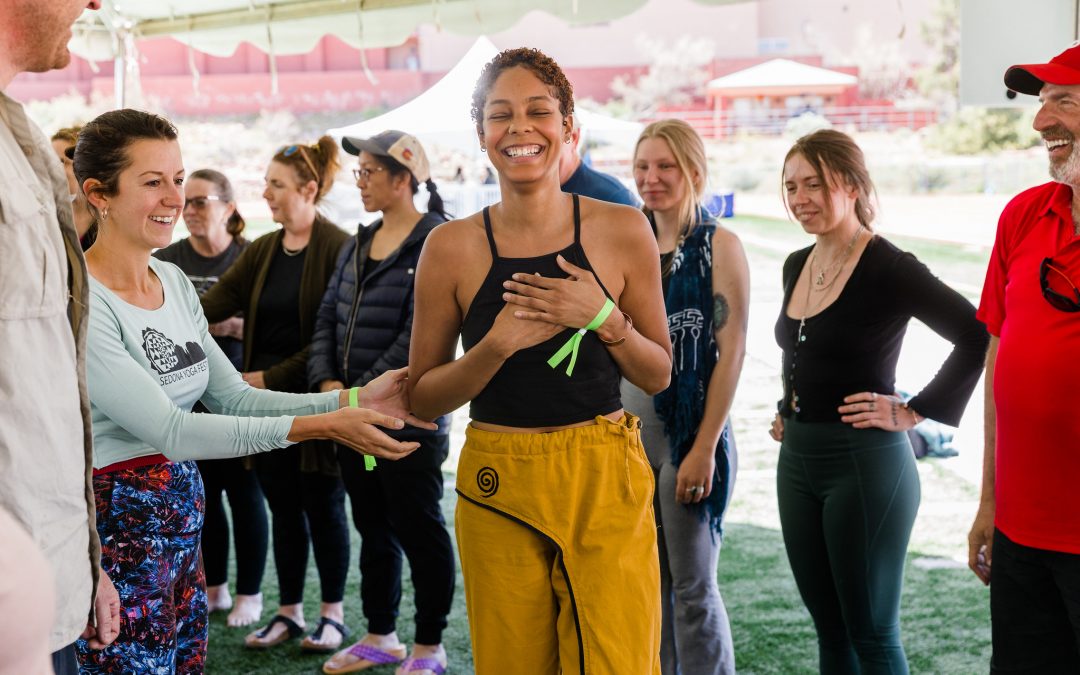
Dec 20, 2023 | Sedona Yoga
Community as a Practice
by Jivana Heyman
The below is an excerpt from Jivana Heyman’s newest book, coming out January 11. Order your copy today!
Often when I teach about how collaboration supports accessibility, I’m usually referring to a collaboration between teacher and student, which can be incredibly powerful. But there is also the collaboration that happens within a group of students. They can support and encourage each other in essential ways. So it’s important to reflect on how you can help to build a positive yoga community that is supportive, welcoming, and safe for all your students.
When I spoke to Michelle Cassandra Johnson, she explained how community building is an outcome of humility because it shifts power from the individual teacher to the group. It’s an acknowledgment of the healing power of the community. I love the idea that a yoga community is more than its lead teacher or teachers. It is the community itself that is key. It reminds me of Thich Nhat Hanh’s famous saying, “The next Buddha will be a sangha.”
Personally, I find group classes to be a very different experience from my home practice. The group offers support and encouragement and a sense of camaraderie that inspires and motivates me. Cultivating a healthy community is one of the truly special opportunities of teaching yoga.
The stereotype of a lone yogi sitting in meditation in a cave is more mythology than reality. Community is itself a yoga practice because it’s about learning to see yourself in others—which can be hard to do. This idea of transcending our individualism is a thread woven throughout the history of yoga. You can even see it in the wisdom of the Bhagavad Gita:
As your mind becomes harmonized through yoga practices, you begin to see the Atman in all beings and all beings in your Self; you see the same Self everywhere and in everything.
Ironically, to facilitate the inward journey of the yoga path, we need outer support. Support in the form of a loving community. Sangha, spiritual community, is helpful in inspiring practice as well as keeping us on the path when we’re struggling. This can be a lot simpler than it sounds. It can simply be a group of students who become yoga friends, bound together by a welcoming teacher.
While we all benefit from community, Accessible Yoga classes may include students who are particularly isolated. Isolation can be unhealthy mentally and physically, so creating opportunities for community-building is not only a nice idea, but a very effective technique for supporting students in general. As a teacher, consider ways to support connection and community. This could include:
- Having students introduce themselves at the beginning of class or doing a quick icebreaker.
- Learning your regular students’ names.
- Creating space before or after class for conversation.
- Encouraging students to support each other. They can connect and form friendships outside of class in a way that may not be appropriate for you as the teacher.
- Thinking of activities for the students to do together, such as form a book group, or create a fundraiser for a cause they are interested in supporting.
Learn more on Jivana’s website, and then practice with him in-person at the Sedona Yoga Festival in March! Tickets on sale now.
Lead image by Danielle Holman.
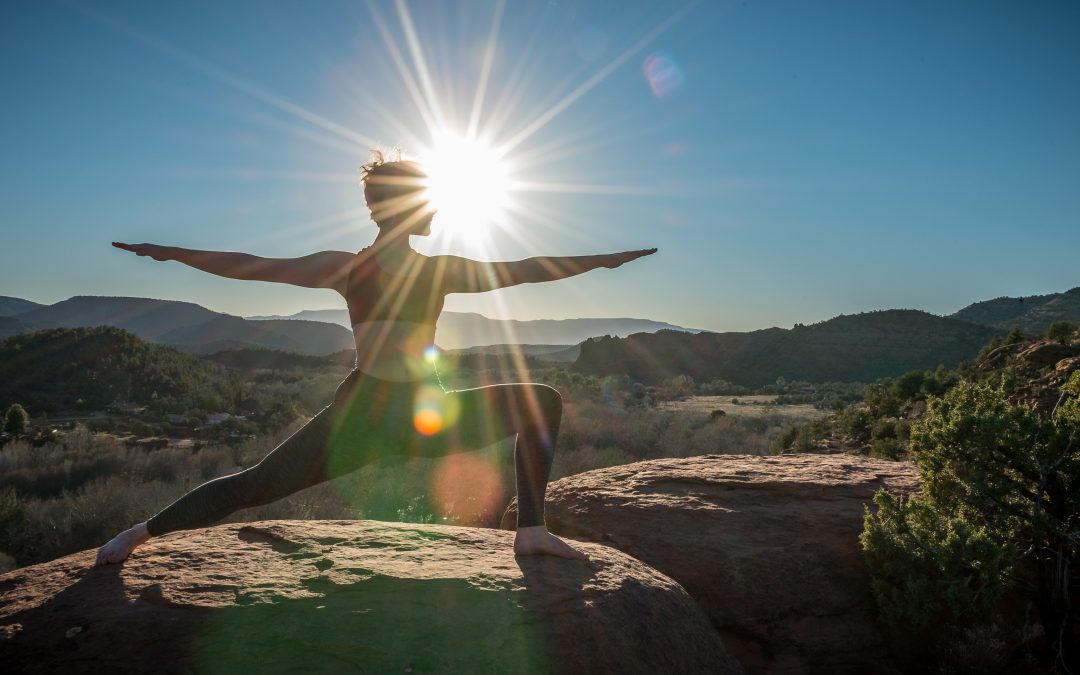
Dec 18, 2023 | Sedona Yoga
Use the Solstice to Align to Your Inner Truth
The winter solstice is upon us, marking a return to the light and a natural evolution toward the sun. These days of darkness are seemingly mirrored in the world at large, as wars rage on, the news continues to peddle in fear, and the fabric of society seems to fray at the very seams. It can feel daunting at best — and impossible at worst — to find a sensation of grounding and calm. But in a world and a society that functions and thrives on this fear, joy and peace are an act of resistance. Coming together in collective consciousness is the beginning of a revolution, and choosing to live and love in the spirit of interconnectedness creates currency. That’s what SYF2024, “All Together Now” is all about. We can choose to live in love and interconnectedness. We can share our gifts and bring light to the world, even as it is shrouded in darkness.
It may be a return to the light, but this week’s winter solstice energetically ushers in the season of an inward journey. Just as animals in the wild burrow and tuck away for the colder months, so too our souls crave the sensation of hibernation by taking the time to focus within. As SYF Communications Director Lisette Cheresson and her co-author Andrea Rice write in their book, The Yoga Almanac, “The quietness of the winter season gives us pause to reflect on the roader spectrum of life. It is in contemplative inquiry that we can via life from its deepest depths to highest heights and begin to understand that difficulty and ease can coexist.”
To say — we cannot change the darkness of the world, but we can welcome the light as a counterbalance, and we can look to be it when we can.
Some yogis in the northern hemisphere consider the winter solstice to be a portal, in which our inner mystical sun is connected to our share sun as it reaches its lowest point on the horizon. It is thought that the sun has properties that may help to open and nourish the third eye; we have an opportunity to energetically connect to these healing properties as the sun dips on the winter solstice before beginning its ascent to the summer solstice once again.
With our third eye — our seat of intuition and self-knowing — energetically roused, it is fitting that the solstice comes toward the end of the Gregorian calendar year, a time in which many choose to set intentions or goals for the near future. How will YOU use this solstice to align to your greatest truth?
Explore it, and then share with your intentional community this March 14–17 at the Sedona Yoga Festival. Tickets available now!
Lead photo by Charles Ruscher.

Dec 6, 2023 | Sedona Yoga
If you’re looking for a gift for the conscious seeker in your life, look no further. We’ve put together a Giving Guide featuring our friends and partners — as well as some recommended nonprofits to consider for end-of-the-year donations. We believe that gifting can be an extension of the mindful ways you live your life, and we are committed to showcasing some of the most beautiful products and experiences that support those larger goals and beliefs.
Please note that this is just a teaser of all the extraordinary gifts we are highlighting this year. To receive your free Giving Guide in all its complete glory, please sign up for our newsletter here. You will receive your 2023 Holiday Giving Guide upon confirmation of your email address.
Please note: If you are already signed up for our email, stay tuned to your inbox for a direct link to download!

The Root Board is the perfect embodiment of form and function. It is made from eco-friendly and highly renewable Moso bamboo. Weighing 28 lbs, it is purposely heavy to provide a secure foundation to place your mat. Expect it to elevate your yoga-at-home sanctuary while providing the stability you need for challenging balance and inversion poses. The Root Board is meant for all uneven or soft surfaces, such as carpet, grass, sand, and dirt. It’s portable, so take it with you on your yogis-in-the-wild (outdoor) ventures.
Take $20 off with a coupon code you will find in the Giving Guide!
Kerala Ayurveda
Explore the power of Ayurveda by giving one (or all!) of these extraordinary products from our friends at Kerala Ayurveda. Guided by CEO Vaidya. Jayarajan Kodikannath — who will be presenting at SYF2024! — Kerala Ayurveda is committed to mindful care, preserving ancient traditions, and meeting modern standards for safety and effectiveness.
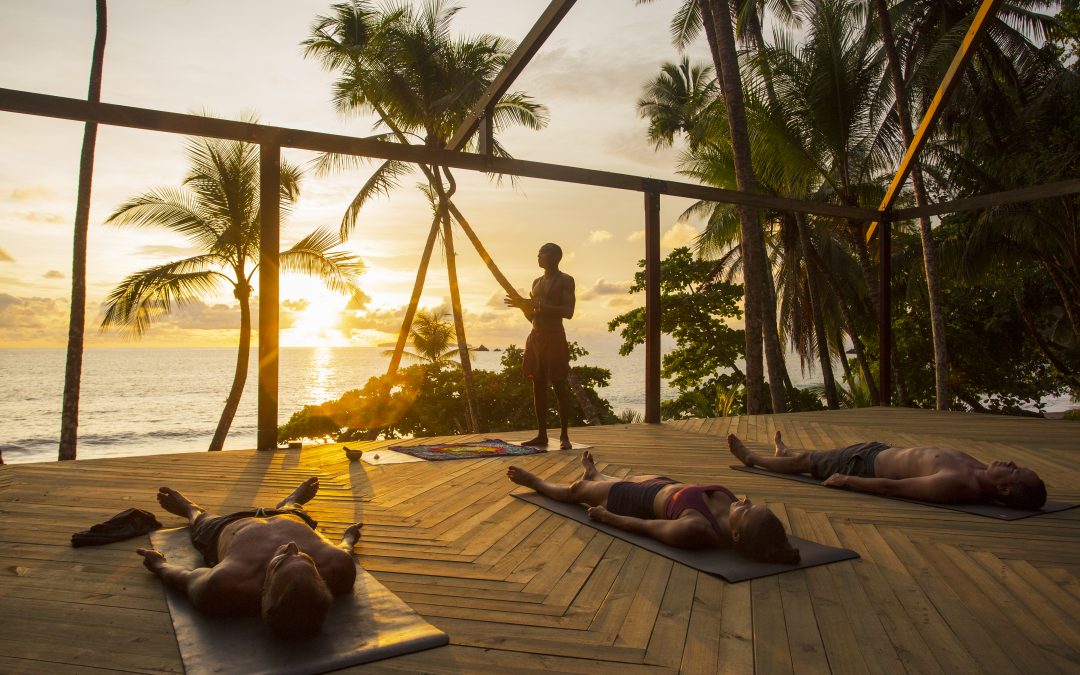
Nov 1, 2023 | Sedona Yoga
Go On Retreat, Help Heal the World with Soul Community Planet
November is upon us, and it’s that time of year to take stock and begin dreaming about next year’s adventures. As you embark on a new cosmic journey in 2024, take time to embrace intentional travels that resonate with the rhythm of your soul. Imagine: a palm-fringed beach in tropical gardens surrounded by 189 acres of pristine rainforest, flowing together alongside fellow yogis, in a location and with hosts strongly dedicated to doing real good in the world. It’s not too good to be true! Soul Community Planet (SCP) is on a mission to connect you with authentic, sustainable, mindful adventure — and they’re bringing their magic to the Elemental Connections Retreat in January 2024, at SCP Corcovado Wilderness Lodge in Costa Rica.

This incredible and remote retreat combines adventure and relaxation with a convenient all-inclusive model. Reachable by boat through mangrove wetlands, you’ll find yourself tucked away on the edge of the Corcovado National Park on the Osa Peninsula, known as the most biologically intense place on earth. Reserve your space in this exclusive retreat today to experience daily yoga, meditation, guided ocean and jungle excursions, and much more — surrounded by the pristine beauty of remote beaches, waterfalls, botanical gardens, and protected rainforest.
The retreat will be led by yogi and smile-maker extraordinaire, Andrew Sealy. Andrew has spent his illustrious career prioritizing the planet and true, holistic wellbeing and joy. “I love having the opportunity to lead Yoga and Nature Reconnection Retreats in the heart of the jungle, and there is no place that compares to the absolutely lush paradise of SCP Corcovado Wilderness Lodge,” he says. “From seeing whales breach the water while practicing Yoga at the Seaside Yoga Shala, to enjoying the fresh scents of blossoming flowers while meditating, to awakening to the sight of a sloth enjoying the sunrise; leading retreats at SCP Corcovado Wilderness Lodge is an absolutely incredible experience that I highly recommend to anyone looking to deepen their relationship with Nature and Self.”
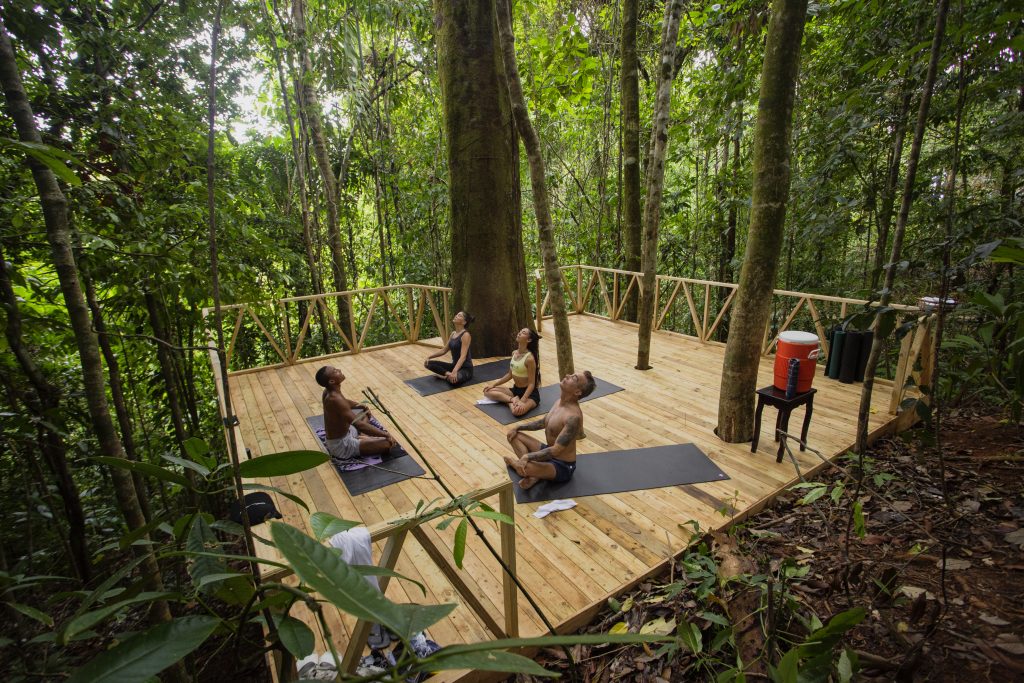
What Is Soul Community Planet?
Soul Community Planet (SCP) Hotels was born out of a vision to help make the world a better place by serving those who value personal wellness, social good, and the environment. At SCP Corcovado Wilderness Lodge this vision comes to life throughout every intentionally designed detail, from the sustainable upscale villas and bungalows to the wealth of outdoor activities at this once-in-a-lifetime Costa Rican destination. Retreats are designed to explore and journey through the environmental elements. Each element — Earth, Water, Fire, and Air — is connected to a specific Yoga and Meditation routine and specific activity to emphasize connection with the natural world while deepening the Awareness and Sensitivity of Soul, Community, and Planet. The beautiful natural setting of our retreats and the intentional practice of connecting to the elements around us can provide a more grounded and present mindset for both instructors and retreat attendees.
SCP practices what they preach, too, through the impacts of the Every Stay Does Good® program. Through this program, every time you choose to stay at an SCP Hotel you provide well-being resources to adolescents, light the home of a family in need, plant a tree in an unnaturally deforested area, and more!
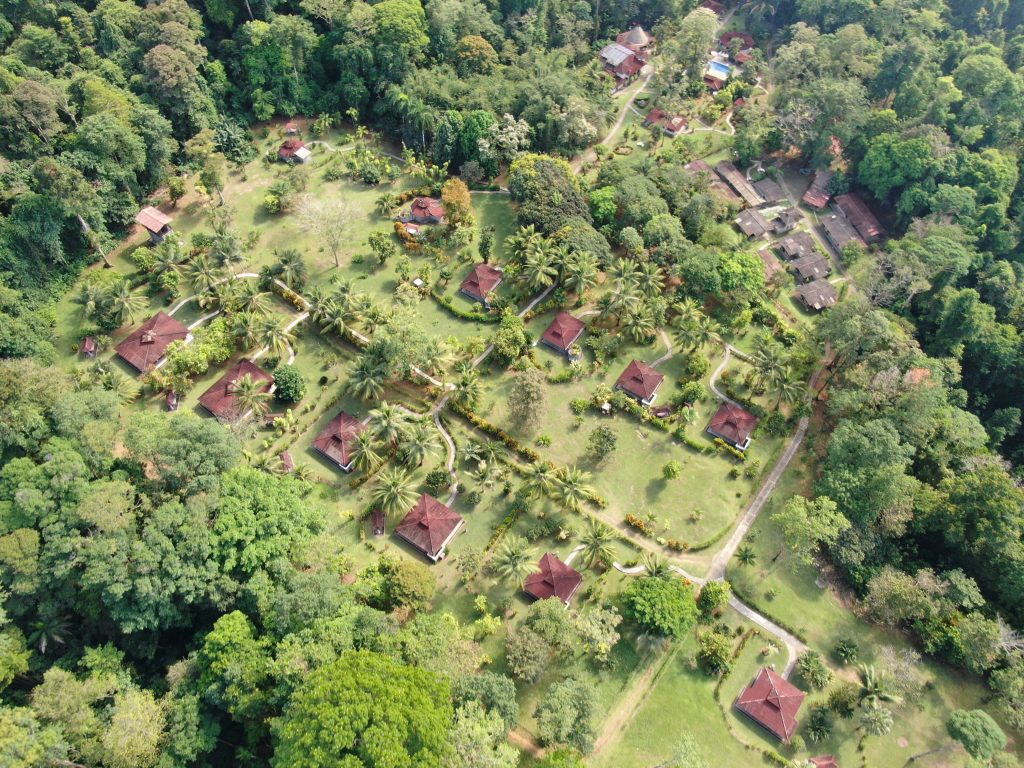
Learn More About SCP — and Enter a Retreat Giveaway! — at SYF
Stop by the SCP booth at Sedona Yoga Festival for a mindful moment to relax in their lounge, explore apothecary products from their partnership with Anima Mundi, and enter a retreat giveaway! The SCP team will have all the details on their January Elemental Connections Retreat with Andrew Sealy at SCP Corcovado Wilderness Lodge in Costa Rica, as well as an upcoming May retreat at SCP Mendocino Inn and Farm with SYF presenter Peter Sterios.
We hope you’ll accept the invitation to participate in this consciousness-raising conference March 14–17, 2024! Tickets available now.
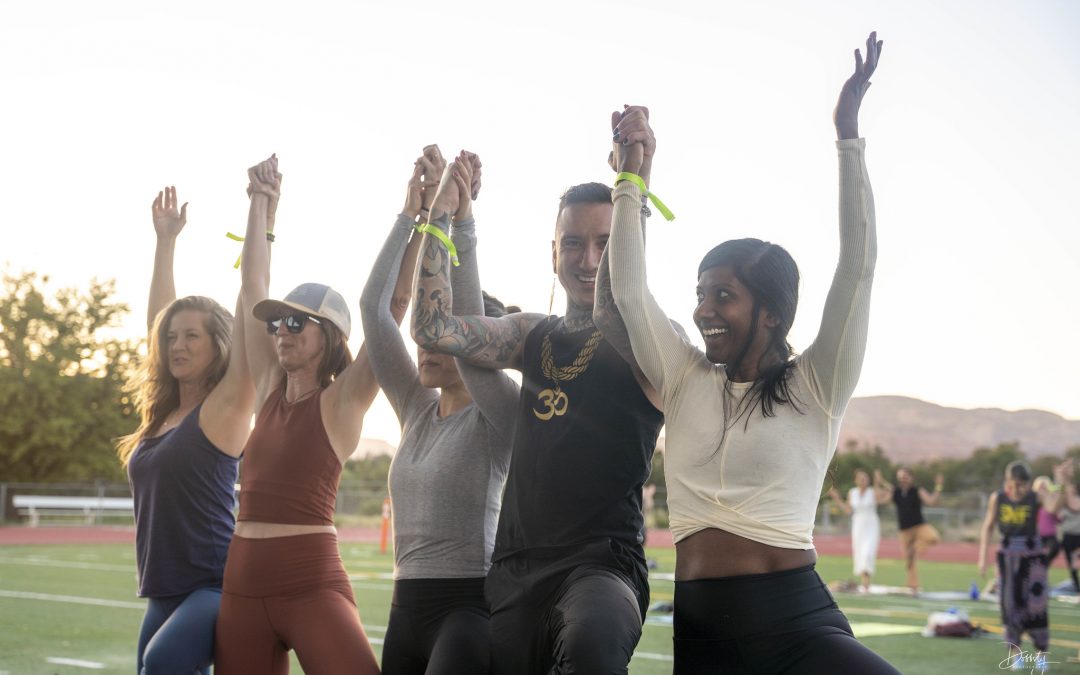
Oct 4, 2023 | Sedona Yoga
All Together Now: The Power of Intentional Community
The biggest question of our time just might be “What does Unity look like?” Spanning in-person connection, video connection, text connection, and phone connection, there are plenty of ways for us to come together and explore what it means to be in a shared or unified space. And yet while technology has brought us closer together across the globe, we are still facing so much division internationally, intra-nationally, and societally. The theme for SYF2024, All Together Now, asks us to ruminate on this: Despite being more “connected” than ever, our world is still largely defined by what separates us. How does Yoga help?
Yoga, of course, is a practice of unity, an exploration of what it means to link body and breath, thoughts and movements, stillness and evolution. It can be a deeply personal and private endeavor, but is one most effectively explored with the support and guidance of experienced teachers and community. So what happens when we come together in intention and consciousness?
There’s no shortage of studies on the power of togetherness, and as we all continue to emerge into a post-pandemic lockdown reality, there are no shortage of personal anecdotes on the importance of face-to-face togetherness, either. As writer Gretchen Kelly eloquently puts it for The Good Men Project:
There’s something special that happens when people come together. There’s a humanity in showing up to share an experience. There’s connection with people who are otherwise strangers. It gives me hope every time I go to a show. Hope because there is power in people. There is energy and strength in being united and finding a common purpose. Hope because for all of our differences, there are times when we can come together and make something incredible happen. Hope because we are all broken, flawed, beautiful people just trying to make it in this world.
As you explore what All Together Now means personally for you, we invite you to consider the following:
- How do we hold each other in community as we walk our unique paths?
- What tools and practices and networks support us in evolution of the collective consciousness as well as our own?
- How do the two interplay and are in fact one and the same?
- How do we together build the future and how do our collective and individual actions in the now serve to co-create that future?
- What does yoga have to offer us to support the will and energy required to build a just and abundant world joyfully while navigating the many crises we face together as one human family in the company and respect of our plant and animal neighbors?
Never has it been more compelling for us to proactively create — in our unique way — toward the collective goal of peace, equanimity, and compassion. The Sedona Yoga Festival is an opportunity to co-create the future you want to see, and that begins with togetherness. We can’t wait to be together with you in March!
The 11th Annual Sedona Yoga Festival is March 14–17, 2024, in Sedona. Tickets on sale now!
Lead image by Ty Dobbs.











